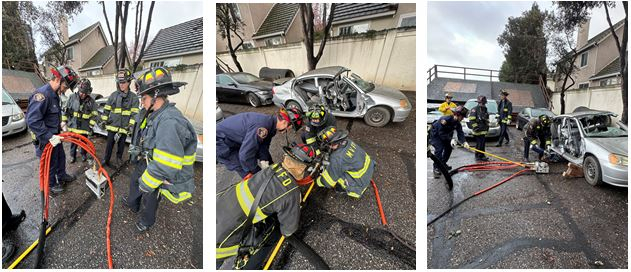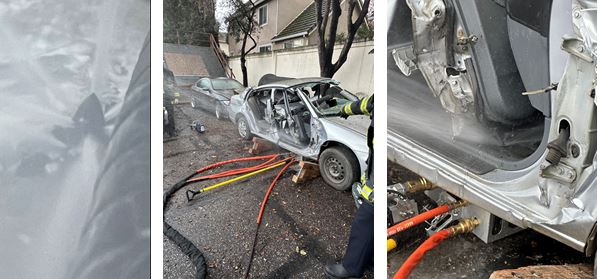Electric vehicle battery fires are known to burn hot, long and occasionally reignite. But they may have met their match with a new tool specifically designed to put out electric vehicle fires faster.
The Mountain View Fire Department has acquired a new device that can rapidly extinguish lithium-ion battery fires – which are used in electric vehicles – using far less water in the process. The tool, known as the Battery Extinguishing System Technology (BEST), is the first of its kind to be used in Santa Clara County, according to a city news release.
With more electric vehicles on the road, the new device is a welcome addition to the fire department’s toolkit. It can be set up in less than two minutes, and firefighters can perform the operation at a safe distance from the burning vehicle, according to the statement.
In the past, fire crews often used a “surround and drown” method to put out electric vehicle fires, which could use up to 8,000 gallons of water that was applied over several hours, the fire department said.
But as lithium-ion batteries have become larger, with more voltage and amperage, fire suppression tactics have needed to evolve, said Andrew Klock, senior manager of education and development at the National Fire Protection Agency (NFPA).
“We've learned a lot over the last decade of where to put water on fires. And you have to make sure that the water is put near the battery case in order to cool the battery pack so that thermal runaway does not continue to propagate,” Klock said.
The BEST tool offers this kind of targeted approach. It has a stinger-like water nozzle that can go underneath an electric vehicle and pierce the underside of its battery case. With attached hoses, it then floods the battery with eight gallons of water per minute, extinguishing the fire using as little as 500 gallons of water in an hour, according to the fire department statement.
While the challenges of electric vehicle fires are a bit different than internal combustion engine vehicles, they are not necessarily more dangerous, Klock said. But he did note the importance of staying up-to-date on current technologies, something that NFPA tries to facilitate with free online training and tutorials for firefighters.
“Firefighters are always posed with different kinds of challenges because technology is always evolving," Klock said.
Upon request, the Mountain View Fire Department also plans to lend out the BEST device to other local jurisdictions so they can combat electric vehicle fires faster and more safely too.



Comments